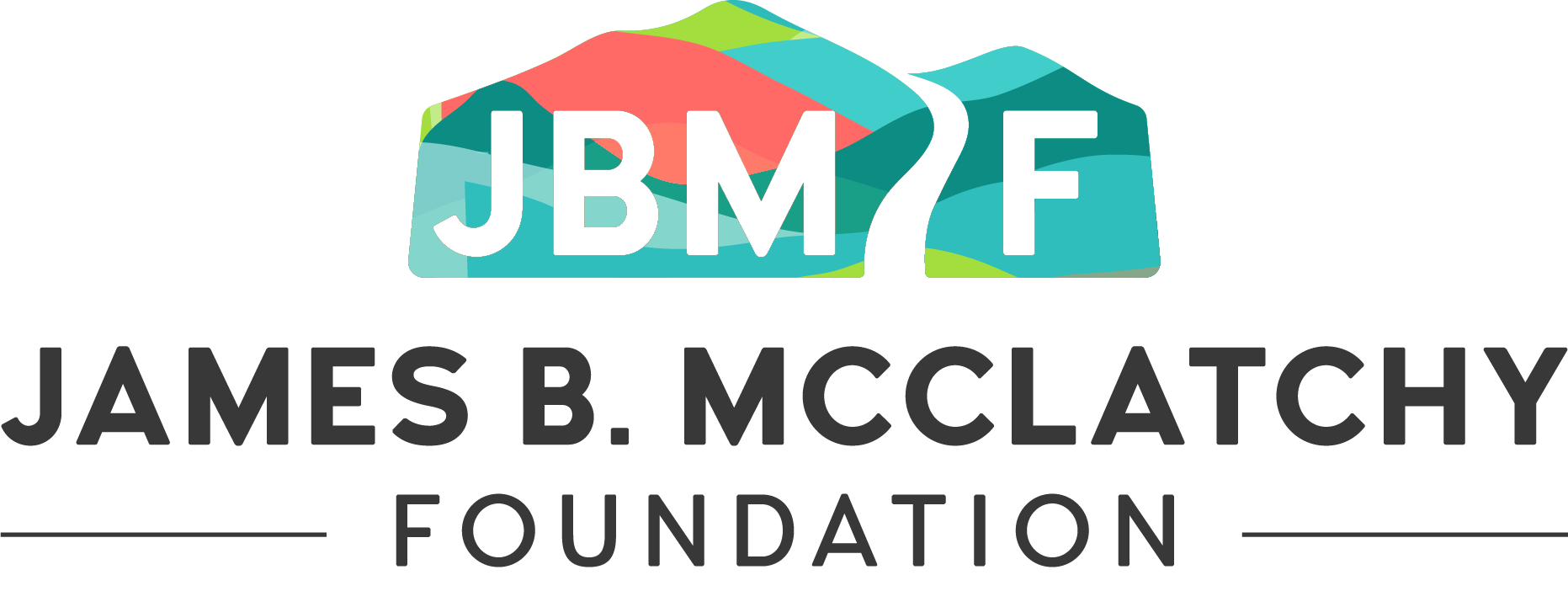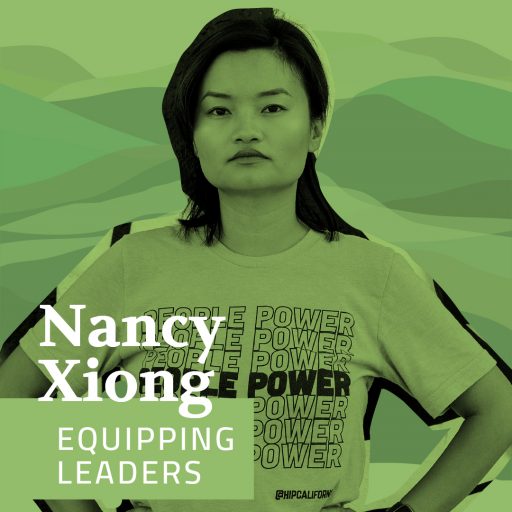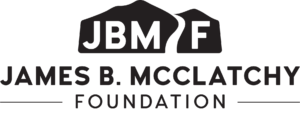The mission of Hmong Innovating Politics (HIP) is to strengthen the political power of Hmong and disenfranchised communities through innovative civic engagement and strategic grassroots mobilization. This is Nancy’s StoryEngine*. (Spanish translation here , Hmong translation here)
“What we want to build, we won’t see it now but we will see it in ten years. I want to be able to celebrate when that ten years comes, knowing that HIP is contributing to changing the Central Valley and empowering a new generation of leaders to lead.”
Guided by Purpose
I grew up in the Central Valley, specifically Merced; I was born and raised there. I lived in Merced and then we moved to a smaller town in Atwater. My parents are Southeast Asian refugees. My dad was a soldier in the Secret War. They came here after the Vietnam War in the 1980s and hoped they would be able to farm and live a similar lifestyle to the one they had in the mountains of Laos. I always start off my story with my parents because they came here not speaking any English and they still don’t speak a lot of English. I’m also the youngest of 10 siblings; we have a big family.
I’ve felt like I always had to advocate on behalf of my parents. At the age of 12, I was interpreting for them, asking hard questions and [discussing] medical terms I wasn’t even familiar with. They trusted that government systems would take care of them, but I learned from an early age that wasn’t the case.
I always feel like there’s a side of me that naturally advocates and connects communities with resources. Decision makers and the policies they create can hurt our communities. The political is personal and there is personal buy-in for why it’s important for us to be political.
Reflecting back, things still haven’t changed that much in the Central Valley. There is deep-rooted systematic racism that exists in the Central Valley. That’s why I’m passionate about social justice and the disparities happening in my communities; that really motivates my work.
The work that we do focuses on youth leadership development- being able to provide opportunities for youth to lead and think about issues and campaigns that they’re passionate about and want to work on. We uplift their stories. We’re really trying to build across generations and support leaders to lead.
The Power of the Vote. The Power of Storytelling.
The other part of our work is civic engagement and voter education which stems from HIP’s roots when we first started in 2012. We did a lot of voter engagement work- pushed out voter guides, drove our community members to the voting polls, made sure folks had access to in-language information and knew how to register to vote and where to go vote. We understand how pertinent elections are and the impact at the local level with our City Council and County Supervisors. When we thought about political power and building buy-in our communities, we always focused on the power of the vote. We’ve really been working towards being a trusted organization for folks.
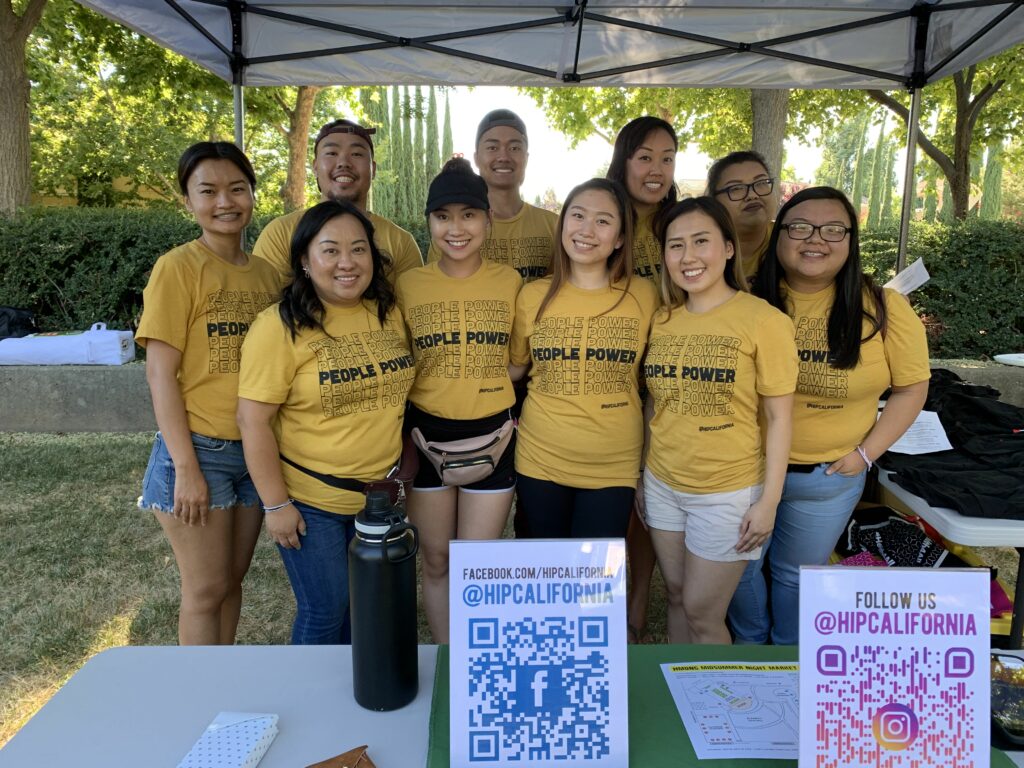 The last part of our work is the narrative change and storytelling. It’s one of my biggest passions in what we do because we recognize that our Hmong community is still very young and there’s a lot of potential for us to push them to be more progressive.
The last part of our work is the narrative change and storytelling. It’s one of my biggest passions in what we do because we recognize that our Hmong community is still very young and there’s a lot of potential for us to push them to be more progressive.
We’ve been utilizing our platforms to uplift our communities to use their voice and power to create long-term systemic change. It’s been a big game changer for us. That work is really fun and I love it. Now that we’re pulling our young people in, it’s been really fun for them too.
When they talk about all the social issues that are happening, they are so articulate. Our youth always share stories about how in high school, they weren’t that loud because they were scared, but once they joined HIP they’re like,”what do we have to lose?” They’re a lot more vocal about systems now. It’s really great to see the next generation of leaders coming to their power to make sure that their little cousins, nieces, and nephews don’t have to go through what they went through. It’s what I would have liked to see as a young person of color living in the Central Valley and it continues to motivate me.
Defining the Central Valley
The Central Valley to me includes the area from Stockton all the way to Bakersfield. The Central Valley is also farmland. It’s super diverse but also conservative. I can remember the Highway 99 overpass growing up. When driving down the 99, you start to see a divide. Once you drive across that overpass, you get into an area of rich custom homes, which is such a different community than I and my friends grew up in.
My friends and my family recognize a certain portion of the highway – a huge ‘bump’ when driving through the Central Valley. Whenever you come to that “bump in the road,” you know you’re getting to Merced. I’ve always heard friends and family share stories about it and knowing they were almost in Merced. When I hear other friends and family talk about it, it really hits home.
The Long Game: Long-term Infrastructure and Capacity Building
Historically, a lot of the organizations serving Southeast Asians that have existed to help with the resettlement of refugees 20, 30, and 40 years ago still do the same work. There are not a lot of organizations like HIP that exist in California that do similar work or have the same values in wanting to work [intersectionally] across different communities of color.
A lot of organizations provide direct services which is important, but haven’t yet evolved to connect advocacy to direct service. We don’t have a designated organization that can help train others in advocacy, and that’s been a big struggle and a missing gap.
On Building Leaders
The most challenging thing is creating a leadership pipeline. Right now I’m doing the organization structure, program creation and implementation. I don’t have a second person to address other parts of the work that I think are equally as important. Retention of skills has been really hard too.
I have a staff of seven people who are super passionate about the community because they all grew up in very similar areas and they have the same values, but they are new to organizing. It’s been amazing to watch them grow into their roles. That makes me really proud because then I think I’m doing something right.
I feel my best self when staff can articulate the vision and goals and then take ownership of the work. They can imagine and envision what this next couple of years is going to look like without having to question it. I’m like “oh my gosh – they are getting it!”
Every time I have a conversation with my staff and they’re talking to young people and [hearing] the impact that HIP has had on their lives, it truly inspires me and keeps me optimistic. That’s what I’m really excited about. Our young people are ready. Young people inspire me to work even harder. Given the time, tools, and skills, in 10 years we’re going to see the fruits of our labor and this new generation of folks becoming politically and civically engaged at every level.
I can’t change the mind of folks who are much older, but the folks who are younger can realize their voice and power. Young people keep me optimistic about what’s going to hopefully happen in the Central Valley.
A 20 Year Vision
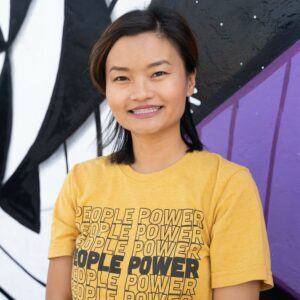 I always think about the long-term investments that are needed and will continue to be needed.
I always think about the long-term investments that are needed and will continue to be needed.
I have conversations with my husband about the conservative foundations that give organizations money for 10 years and tell folks, “do whatever you want with it.”
If we could use a similar framework, there’s so much potential and opportunity for us to build more capacity and infrastructure to continue to support the Central Valley. A long term investment is important to make sure the work continues and is sustainable.
We’ve been here for over 40 years. We’re here and we have second and third generation Hmong Americans living here, so what’s the next stage? We can’t be complicit. We have to be the voice and use that power to start to shape policies that support our communities so that they can thrive and we can live in a more just democracy that we’ve talked about since starting HIP almost 10 years ago.
Organizing work is hard and people leave the work when they become burned out and jaded. We’re on the ground doing this work and we’re [slowly] seeing change. We will see what we want to build in 10 years, and I want to be able to celebrate when that 10 years comes knowing that HIP contributed to changing the Central Valley and empowering a new generation of leaders to lead.
*This story was produced as part of the Lifting Local Leaders storytelling program launched by the James B. McClatchy Foundation. “LIFT” references the inaugural pilot grantmaking program. These stories are guided by the StoryEngine methodology, an open-source, narrative-based, data collection tool developed by Loup Design.
Published on the James B. McClatchy Foundation website using the Creative Commons License https://creativecommons.org/licenses/by-nc-nd/4.0/ : Attribution-NonCommercial-NoDerivatives 4.0 International (CC BY-NC-ND 4.0)
